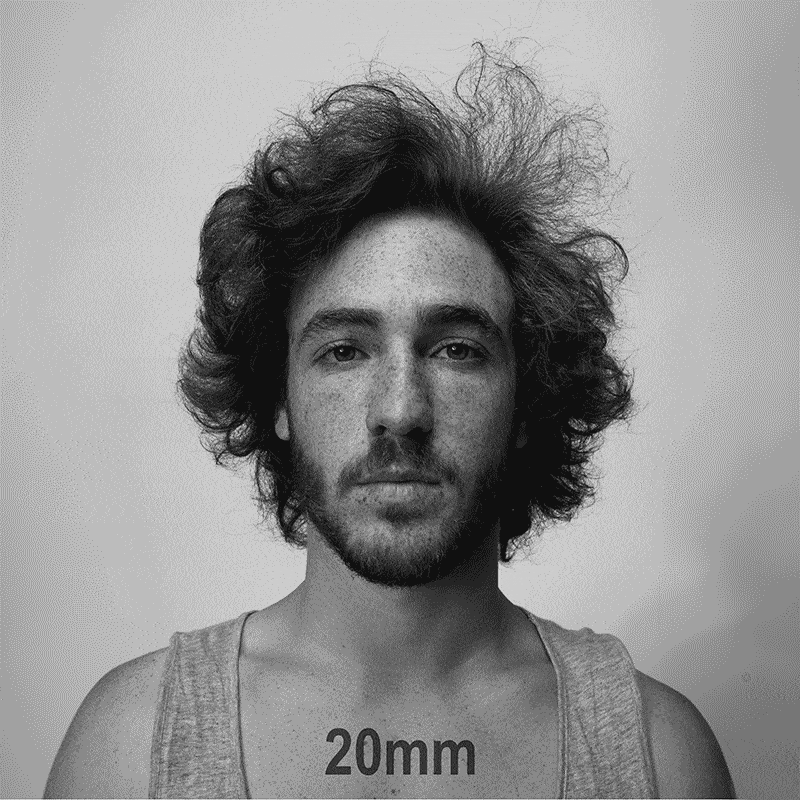If this photo had a background other than a blank wall you'd also see the "dolly zoom" also known as "vertigo effect" where the background gets zoomed in while the subject remains the same size. You get it by zooming in as you walk away from the subject. It's also how those photos where the moon appears massive are created. You just need a telephoto lens and you take a "closeup" picture of a person really far away while having the moon on the background.
interestingasfuck
Please go to [email protected]
Awesome content. What do photographers use for portraits?
85mm is the standard. If you've got a crop sensor, maybe a 50mm gets used. That's your typical portrait stuff.
Some of the better creative photographers will use anything, I've even seen some gorgeous shots with a 14mm, but that sort of fish eye is not your typical portrait look. Usually for something like incorporating more of the landscape/room into the portrait, and less of the person.
Then you've got those really tight shots, maybe ones that dont even show the whole face, those can be done on anything 200mm and up.
Personally I like 85mm-105mm for more studio standard shots, and then activity based for the rest.
Note: I'm not a pro, I'm a guy-with-a-camera. Who has spent way too much money historically on lenses, and now enjoys adapters for old lenses on new camera bodies, for very fun shots.
Any.
Generally you can always move close or further away to offset too much.
For standard corporate stuff I shoot at 70mm. For creative stuff I've shot from 24mm to 200mm.
This would be way more useful if it had sensor size and distance to the subject included. While we talk about lens focal lengths a lot, distance to subject is the most important factor for changing the way the face looks because a photo taken with a wider lens can always be cropped to get the same perspective as a longer lens.
it might be more useful to a newer photographer trying to learn about that, but it would just add confusion to the layperson. this is meant explain this neat concept clearly to non photographers.
it's true though, these kinda of graphics can lead to people misunderstanding this effect as a natural part of the focal length of the lens and less about how far you are from the subject. i had that misunderstood once 😅.
i think the ideal middle ground is probably keeping graphic the same, but adding a comment that explains that detail about it for those who care. a bit like how this all played out actually.
If this is for the layperson, distance makes way more sense than some arbitrary number with "mm" appended to it. Distance also works with common things like eyeballs and phone cameras.
Our brains or eyes automatically account for this, so a familiar face will look the same whether you’re right next to it or across the room. Given that, what focal length most closely approximates the composites our brains create? In other words, what does this guy actually look like?
In photography classes we were told 105 is the most commonly used for portraits, but that was 20+ years ago, dunno if "common wisdom" changed since...
So… longer focal length equals fuller hair? I‘ll have to remember that 😎
